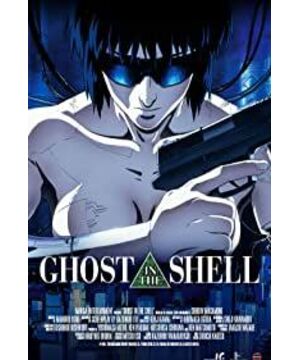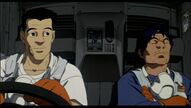I won't go into too much detail here about the achievements of the 1995 film and its impact on various Asian and European and American film practitioners. I would like to talk about my favorite part of the film, that is, the very famous "Street MV Editing".
First of all, from the picture, the tone of the entire "Battling in the Shell" is very dark and depressing; the film does not show many open scenes, and many spaces are very small and narrow. The characters are coerced by this environment, and their actions seem to come and go freely, but they are actually restricted in spirit. Implemented to the protagonist Moko, that is, her myth of her own ghost when her memory and soul can be re-enacted.
The difference is that in this three-minute clip, there are many collages of urban landscapes, and the above is not the same. However, they don't just appear in the film as a mere depiction of the city. The film is set in the near future, and many high-tech products such as thermal optical camouflage are shown at the beginning of the film. In this clip, we can see scenes that are very contrasting with the background settings: incomplete and crowded streets, city rivers full of rubbish, old boats, buildings being built in the distance, a large number of eras The imprinted neon billboards in the 1980s, the cloudy weather with light rain, and the crowd walking on the street are like lifeless corpses; at the same time, Mamoru Oshii used the upgraded shooting and the slow panning camera to make the content and story background of the entire clip. The strong contrast, coupled with the Japanese Noh music used by Kenji Kawai, instantly casts a strong sense of depravity on the tone of the whole story: it is obviously an era when technology is advanced and humans can survive without the physical body, but the construction of cities is downward. developing.
Among these wandering crowds, Motoko, the protagonist, also appeared among them. She sits in the cafe in the office building and looks down, and then the next shot is of her wearing an orange coat looking up. We can say that Suzi is wandering in the city in different time and space, or it can be said that this is the state of mind wandering of her or the people in this city. Mamoru Oshii not only wants to create a symbolic scene construction of "high-tech, low-life" regular cyberpunk film and television works, he goes deep into the interior of this empty surface, excavating and showing people in such a desolate environment , or The Walking Dead's Alive, or the Dying Alive Point. This segment can also be seen as a way of observing how the city and people's spirit and civilization are continuously compressed, solidified and annihilated by high-tech industries and products from the perspective of Motoko and others. From a very realistic point of view, this paragraph appears in other big production works, and nine out of ten will be deleted. Because it neither allows the story to have substantial progress, nor does it directly show the conflict between characters and characters or between characters and their surroundings. But it was the addition of this unique mix that instantly filled the whole film with a gloomy, violent, strong and sad atmosphere.
Oshii Mamoru did not simply put the conflict in the outside world like most sci-fi works, such as a series of international crime incidents encountered by Section 9 of the Public Security Bureau; he built the conflict more on the struggle between the characters themselves and themselves - Motoko Zhishi In the end, she was confused about her identity, but she really didn't want to give up her current self, and tried her best to live and try to find the answer that might appear.
View more about Ghost in the Shell reviews










